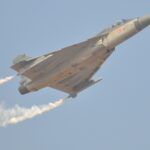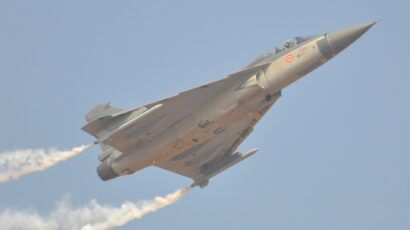Crying wolf about an Iranian nuclear bomb
By Jacques E. C. Hymans | January 17, 2012
The long-simmering international crisis over Iran’s nuclear ambitions may now have reached a boiling point. Washington is imposing sanctions on Iranian oil exports, the heart of the Iranian economy. And Tehran, in turn, is threatening to close the Strait of Hormuz, through which nearly a fifth of the world’s oil trade passes on a daily basis. The potential for outright war between the United States and Iran has never seemed more plausible.
On the one hand, Iran is largely to blame for the ongoing nuclear crisis. The country’s top leaders have ardently embraced the “oppositional nationalist” mentality that tends to give rise to nuclear weapons ambitions. Although they have consistently denied having such goals, their denials ring hollow in light of how fast and loose they have played with the rules of the international nuclear nonproliferation regime — obligations that the Iranians, themselves, agreed to respect.
On the other hand, top policymakers in the United States and Israel have also done their part to stir the pot. They have heightened the crisis not just by their belligerent rhetoric and aggressive covert actions, but also — and indeed, more fundamentally — by endorsing highly generous assessments of Iranian nuclear technical capacities, which make it seem as if the birth of an Iranian nuclear bomb is just around the corner.
In fact, those assessments are extreme, worst-case scenarios that invite a replay of the tragic preemptive war that the United States launched against Iraq’s phantom nuclear program in 2003.
It is one thing for Iran to want nuclear weapons; it is an entirely different matter for it to actually build them. Even taking the darkest possible view of Iranian nuclear intentions, the historical record provides ample reason to doubt that Iran is on the verge of entering the nuclear weapons club.
Crying wolf. As strategic analysts Anthony Cordesman and Khalil al-Rodhan remind us, in the 1990s, high-level American and Israeli policymakers repeatedly warned of an Iranian bomb by the year 2000. When that did not come to pass, policymakers warned of an Iranian bomb by the year 2005. Then they said it would happen by 2010. Now the talk puts Iran’s nuclear debut in the 2013-2015 time frame, if not sooner.
The story of the boy who cried wolf comes to mind.
This is not to deny that the Iranian regime has made some progress toward the bomb during its quarter-century of intensive nuclear efforts. Most notably, Iran has accumulated a decent amount of low-enriched uranium, enriched to about 3 percent, and a small amount enriched to around 20 percent. The country has recently embarked on a major campaign to build up its stockpile of 20 percent enriched uranium, and once this is accomplished, Iran will be well-positioned to amass a significant quantity of bomb-grade, 90 percent enriched uranium. Bottom line: Today, Iran is about halfway to its putative goal; not many countries have been able to make it even this far.
That being said, however, it is crucial to recognize that the quality of Iran’s nuclear workmanship has been consistently poor, so it has been able to progress at no more than a snail’s pace.
For instance, Iran imported powerful Pakistani P2 centrifuge models in the mid-1990s, but it was not until 2011 that it finally began using a version of them in its enrichment drive. Even now, the vast majority of the Iranian enrichment effort relies on the very inefficient Pakistani P1 centrifuge design.
Indeed, in recent years — despite the headlines about Iranian nuclear progress — its number of working gas centrifuges has actually been declining, due to wear and tear, poor maintenance, a lack of spare parts, and impure feedstock. (As of 2005, Iran’s uranium hexafluoride gas feedstock was still not much better than “garbage.”) As a result, even before the devastating 2010 Stuxnet virus attacks, the Iranian program was already experiencing a “tremendous slowing down,” in the words of former IAEA safeguards chief Olli Heinonen.
Is it really reasonable to expect such low-quality, brittle technical infrastructure to create a single, Hiroshima-size nuclear device — let alone a bona fide nuclear weapons arsenal?
Dangerous speculation. Admittedly, Iran may not be showing the world the full extent of its nuclear efforts. Anti-Iran hawks often conjure up images of a secret cave with a highly efficient nuclear complex, like that of a James Bond villain.
But even though Iran’s claims that it is open and honest with international nuclear inspectors are unbelievable, that does not mean it is hiding a sophisticated weapons program. In fact, the record shows that Iran’s distinct tendency is to exaggerate its nuclear accomplishments. The typical Iranian pattern has been to hold a grand celebration to announce a big technological breakthrough, and then to spend many subsequent years trying to live up to their own hype. For instance, in 2006 President Mahmoud Ahmadinejad triumphantly announced the forthcoming deployment of the above-mentioned second-generation centrifuges — yet more than five years later, Iran is just beginning to fulfill that promise. This is not the kind of regime that can be expected to keep quiet about the successful production of highly enriched uranium.
Moreover, if Iran eventually does build up a significant stockpile of highly enriched uranium, it should not be considered even a virtual member of the nuclear weapons club until it has carried out a successful nuclear test. (And note that Iran’s geopolitical position and past history provide every reason to expect that it will try to carry out a test, when it is ready to do so.)
The problem with the virtual nuclear weapon state designation is that there is a major difference between a stockpile of fissile material and an actual, reliable, deliverable nuclear weapon. By way of comparison, recall that starting in the early 1990s, the United States credited North Korea for having one or two bombs, based simply on the country’s estimated plutonium stockpile. That assumption had a major impact on Washington’s policy toward Pyongyang. But Kim Jong Il’s miserable little fizzle of a nuclear test in 2006 set the record straight. It was only with its second nuclear test, in 2009, that North Korea finally limped across the finish line, and even now it is doubtful whether Pyongyang can detonate a nuclear device anywhere other than at a fixed position on its own territory. Iran’s nuclear home stretch run is likely to be just as long and winding as North Korea’s has been.
Not a special case. The persistent tendency to overestimate Iran’s nuclear capacities reflects the broader conventional wisdom that today, more than six decades after Hiroshima, it just isn’t that hard to build the bomb anymore. That belief, however, is fundamentally mistaken. Nuclear weapons are extraordinarily complicated technical instruments, and nuclear weapons projects require the full-hearted cooperation of thousands of scientific and technical workers for many years. The task is enormous, and many states have fallen short.
Historically, the key driver of an efficient nuclear weapons project has not been a country’s funding levels, political will, or access to hardware. Rather, the key has been managerial competence. Nuclear weapons projects require a hands-off, facilitative management approach, one that permits scientific and technical professionals to exercise their vocation. But states such as Iran tend to feature a highly invasive, authoritarian management approach that smothers scientific and technical professionalism.
Thus, it is very likely that Iran’s political leadership — with its strong tendency toward invasive, authoritarian mismanagement — has been its own worst enemy in its quest for the bomb. But it can partially overcome these self-imposed hurdles by appealing to Iranian nationalism, and such appeals are much more effective when stimulated by violent threats and actions from the United States and Israel.
Iran’s nuclear ambitions are surely a cause for concern. But the current climate of hysteria is unjustified and counterproductive, a major impediment to the sober pursuit of a diplomatic solution.
Together, we make the world safer.
The Bulletin elevates expert voices above the noise. But as an independent nonprofit organization, our operations depend on the support of readers like you. Help us continue to deliver quality journalism that holds leaders accountable. Your support of our work at any level is important. In return, we promise our coverage will be understandable, influential, vigilant, solution-oriented, and fair-minded. Together we can make a difference.
Topics: Nuclear Weapons, Opinion















